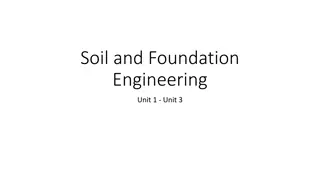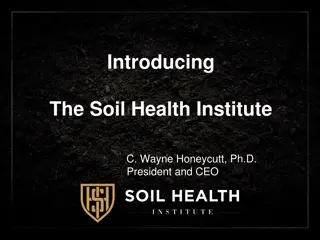Exploring the Fascinating World of Soil: An Insightful Journey
Delve into the intricate composition of soil through a hand lens to uncover rocks, minerals, and humus. Discover the hidden elements like water, air, and living organisms that form the foundation of soil. Witness the decomposition process by bacteria and fungi, and explore the layers of a soil profile. Learn about the diverse types of soil, their unique properties such as texture, color, and permeability, and understand the significance of pore spaces in soil. Experience how permeable soil sustains life, providing a habitat for various organisms.
Download Presentation

Please find below an Image/Link to download the presentation.
The content on the website is provided AS IS for your information and personal use only. It may not be sold, licensed, or shared on other websites without obtaining consent from the author. Download presentation by click this link. If you encounter any issues during the download, it is possible that the publisher has removed the file from their server.
E N D
Presentation Transcript
1. If you look at soil with a hand lens, you will find small pieces of rocks, minerals, and humus.
2. You might not see them, but soil is made up of water, air, and living things as well.
3. When plants and animals die, bacteria and fungi decompose them.
4. All layers of soil, from Earths surface down to the bedrock are shown in a soil profile.
5. The different layers of a soil profile are called horizons and include topsoil, subsoil, and weathered bedrock. Topsoil Subsoil Weathered Bedrock Bedrock
There are many different kinds of soil with their own properties.
6. The property of soil that refers to the size of soil particles is called texture. Clay is fine with small particles and sandy soil is coarse with large particles.
7. Other properties of soil are color and permeability, which indicates how easily water passes through soil.
8. The spaces between the particles in soil, called pore spaces, determine how porous the soil is.
Porous materials have pore spaces in them which hold air and water.
9. Soil that is permeable to air and water will allow living things to survive.
Permeability describes how fast water passes through a porous material. The size and number of pore spaces affects a soil s permeability.
10. If the soil does not hold enough water, crop plants can dry up. If the soil holds too much water, crop plants can drown.
11. Pedologists can learn about the soil s properties and what kind of plants could grow in that type of soil.























